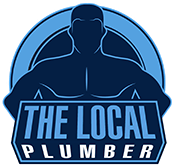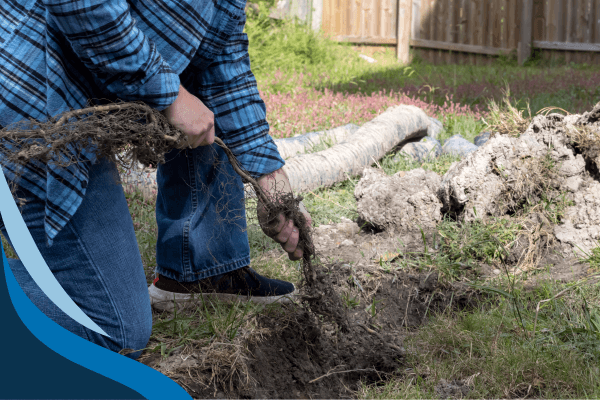Effective garden drainage is crucial for maintaining a healthy backyard and protecting your property’s foundation. Poor drainage can lead to numerous problems, including waterlogged soil, stunted plant growth, erosion, and even water damage to your home. Whether you’re designing a new garden or improving your existing one due to existing issues, understanding the basics of garden drainage is essential. Our blocked drain plumbers here at The Local Plumber Melbourne have compiled a comprehensive guide to help you manage water flow in your garden efficiently.
What Is Garden Drainage?
Garden drainage refers to the methods and systems used to control water flow in your landscape. Good drainage ensures that excess water is efficiently removed from your soil, preventing saturation that can harm plants and erode land. Conversely, inadequate drainage can turn your garden into a muddy mess and threaten structures with water damage.
Signs of Poor Drainage
Recognizing the signs of poor drainage is the first step towards finding a solution. Based on our professional daily experiences across Melbourne, here are some of the most common signs of poor drainage:
- Standing Water: Water pools that linger for hours or even days after rain are a clear sign of drainage issues.
- Soggy Soil: If the soil in your garden feels squishy underfoot and remains wet long after watering or rainfall, it likely indicates poor drainage.
- Eroded Areas: Soil erosion around slopes in your garden can result from runoff that isn’t being properly managed.
- Unhealthy Plant Growth: Plants that look yellowed, stunted, or are dying despite proper care may be suffering from too much or too little water due to poor drainage.
Types of Garden Drainage Systems
There are several drainage solutions that can be tailored to the specific needs of your garden. Be sure to consult your local plumber as to what type will work best for your garden.
1. French Drains
A French drain consists of a trench filled with gravel or rock containing a perforated pipe that redirects surface water and groundwater away from an area. It is ideal for gardens that suffer from surface water pooling.
2. Surface Drainage
This involves creating shallow ditches in a grid pattern that channel water toward a main drainage outlet. Surface drainage is suitable for large gardens or areas that need to quickly divert water after heavy rains.
3. Subsurface Drainage
Also known as a drain tile, subsurface drainage uses pipes laid below the soil surface to collect and redirect water. This type of drainage is used to manage water at root level, ensuring that it doesn’t harm plant roots or destabilize soil.
4. Slope Drainage
In gardens with sloped areas, channel drains or open ditches can be used to guide water flow and prevent soil erosion. Adjusting the slope of your garden to direct water flow can also be an effective strategy.
Garden Drainage Installation
The installation of a garden drainage system often involves detailed planning and physical labor. Before undertaking this project, here’s what you should know:
Planning Your Drainage System
- Consult a Local Plumber: Before undertaking this project, we highly recommend seeking the assistance and advice of a professional plumber. They will be able to help with the below steps. Our experts can offer tailored solutions and ensure that your drainage system is properly installed.
- Assess the Landscape: Understand the topography of your garden. Identify high and low points to determine where water collects and the best paths for drainage.
- Choose the Right System: Based on your landscape, you can then narrow down which type of drainage system best suits your garden’s needs.
Implementation
- Digging Trenches: For systems like French drains, plumbing excavations and trenches must be dug to specific depths and gradients.
- Installing Pipes and Drains: We then lay the pipes or tiles in the trenches, ensuring they have enough slope to carry water away effectively.
- Backfilling: Once pipes are laid, trenches are backfilled with gravel before topping with soil and grass to conceal the system.
Maintenance of Garden Drainage Systems
Regular maintenance is key to the longevity and effectiveness of your drainage system:
- Inspect Regularly: Check outlets and visible parts of your drainage system periodically, especially after heavy rainfall.
- Keep Drains Clear: Remove leaves, soil, and debris that might clog drains. Use drain guards where necessary.
- Monitor Plant Growth: Ensure roots from nearby trees and shrubs do not infiltrate and block subsurface drains.
Melbourne’s Garden Drainage Plumbers
A well-planned and maintained garden drainage system is vital for protecting your landscape and property from water damage. By understanding the types of systems available and implementing the right one for your needs, you can enjoy a lush, healthy garden regardless of the weather. If you’re unsure about how to handle your garden’s drainage needs, The Local Plumber Melbourne is here to help. With our expertise, our team of passionate drainage & emergency plumbers can provide effective solutions that ensure your garden drainage is optimized for years to come.

